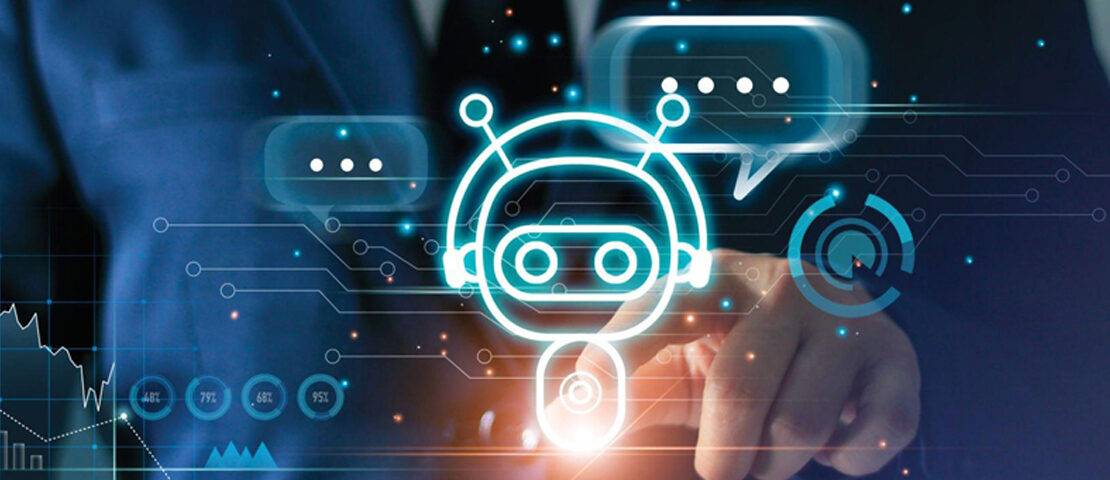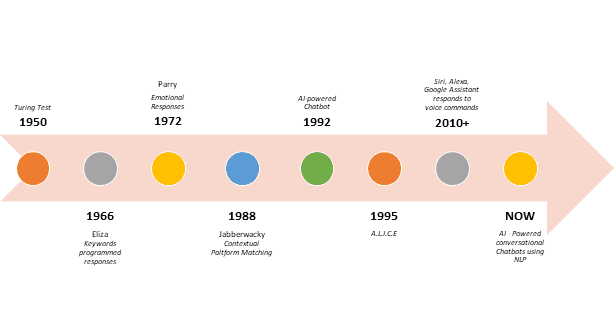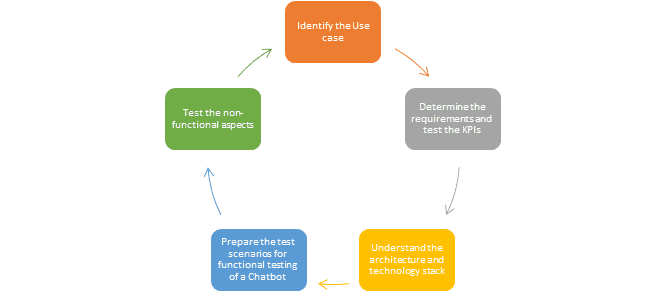- September 29, 2022
- Posted by: K Sunil Raja & Gopalakrishnan
- Categories: AI/ML, Data & Analytics, Digital Assurance

Introduction
A chatbot is a software application powered by AI solutions that communicates with clients in natural language via messaging or voice commands. It can be designed to respond the same way every time to the user, or it can adapt its responses depending on the situation. It can be used via a text messaging application, website chat window, or other social media messaging platforms such as Twitter and Facebook.
Chatbots play an integral role in e-commerce, allowing businesses to communicate with and engage their customers. Since human presence is not required, chatbots can facilitate information at high speeds. For example, a popular learning platform, Coursera, uses a chatbot to impart an entire course online, with learners conversing and clearing their doubts via the bot.
For more details regarding Indium’s AI testing solutions, please visit us at:
Get in touch
Progression of the Chatbot
While many would agree that chatbots have only recently become a buzzword, the earliest notion dates back to when humans began devising methods to interface with computers. Eliza, the first-ever chatbot launched in 1966 by Joseph Weizenbaum of the MIT Artificial Intelligence Laboratory, was invented even before the personal computer became popular. Eliza assessed the keywords supplied as input before triggering an output according to a defined set of criteria. Several chatbots still employ this approach to produce output.


Business Benefits of Using Chatbots
A chatbot strengthens customer relationships by interacting with customers and delivering responses. It achieves its market objectives and drives sales promotion processes and service availability. Within some fields, it also provides advantages like decreased operating costs, reduced human error, 24/7 assistance, and automation.
How Chatbots Enable Digital Assurance
Before a chatbot is released in the market, a digital assurance check must be done. It should perceive the customer’s intent and scale appropriately. It is also essential to test it with multiple business cases, input values, and template combinations.
 Digital Assurance Workflow
Digital Assurance Workflow
Training Data
The chatbot must be programmed to comprehend specific mathematical models to determine the user’s purpose. The chat should be tested from the commencement of the use-case test until the conclusion of non-functional components. Chatbot testing is comparable to:
- Robotic Process Automation (RPA) testing
- Security Testing and
- Unified Functional Testing (UFT).
Pre-launching Tests in Chatbot
Prior to its release, there are three ways to test the chatbot:
- General test
- Product/service-specific test
- Restrictions test
Completing these tests before the release would be ideal since they reveal the status of the main areas and the underlying problems.
General Testing
In the preliminary phase, answering the client’s query is the main criterion. For instance, if a user joins the chat to ask a question, greetings or welcome messages must be displayed on the screen as a first general test. If this does not occur, there is no point in continuing to test.
Domain/Specific Testing
If the first step of welcoming the user has been completed, we move on to the domain test, which involves answering the customer’s queries regarding a unique group or product. This is the conversation stage where your chatbot provides credible information on your products/services. The chatbot should be able to answer coded or frequently asked questions and attain the maximum correct answer ratio.
Manual Testing
Amazon’s Mechanical Turk, a marketplace that automatically uses human intelligence for testing purposes, reduces the amount of manual labor necessary for manual testing. This strategy increases trust in a product and reduces the number of manual errors.
Limit Testing
Limit testing is the final step of pre-launch testing. In limit testing, the chatbot’s commitment is responding to irrelevant customer information and how effectively it resolves customer matters.
This might interest you: Things to Keep in Mind while Testing Machine Learning Applications
Post Launching Tests in Chatbot
After launching the chatbot, the following tests are required to certify the chatbot is stable and robust enough for optimum utilization.
A/B Testing
A/B testing compares two different types of products to see which product is better. In this test methodology, we must collect the maximum data we can. Though a dated testing model, it is still one of the most effective ways to analyze the efficacy of differences within products.
A/B testing processes two factors:
• Visual Factors: To assess the best designs, colors, and location on the world wide web
• Conversational Factors: To design the quality and performance of an algorithm
Apart from the above factors, there are a few vital aspects and procedures to attain the ideal state of a chatbot, as outlined below.
E2E Testing
This is a very familiar testing technique within QA that ensures real-time user experience and end-to-end flow via text-based or voice-based test coverage.
Natural Language Processing Testing (NLP)
Natural language processing is the linguistically-oriented field of computer science concerned with the software’s ability to understand natural human language, both written and spoken. NLP can define role-based modeling to produce logical algorithms that assess and comprehend a user’s lengthy procedural communication. Natural Language Processing (NLP) Testing evaluates a chatbot’s ability to read the language based on the user’s intent, leading to more natural interactions.
Performance Testing
This testing can involve evaluating concurrent users to ensure the sustainability and quality of responses under varying load conditions, creating a seamless experience for end users.
Security Testing
Chatbots may have access to vast quantities of data or private information. Consequently, they may be a desirable target for hackers, and known web application flaws may also be a security risk for chatbots.
Technological Trends in Chatbots
- Personalization: It has the training to store customer profiles and behavioral status to proceed with upcoming chats. It also suggests profiles or brands using artificial intelligence.
- Machine Learning Operations (MLOps): It uses a CRM to maintain customers’ information which helps to provide customers with details from the previous conversation.
- Voice Recognition: It involves faster intercommunication without having to type, like Alexa, Siri, etc.
Conclusion
The last few years have seen the profile of chatbots growing exponentially. They have the potential to act as an intuitive link between customers and businesses. The rise of e-commerce and emphasis on customer experience will unlock new opportunities and ease while resolving customer FAQs with a quick turnaround.
We understand the importance of a streamlined testing strategy for the success of the chatbot software application. Despite that, the mere presence of a testing strategy does not ensure the quality and performance of a specific group or product. The strategic selection of target groups or domains, and the right choice of testing methodologies, will go a long way in delivering the desired results.
Combined with testing best practices and industry standards, Indium has been helping clients overcome the obstacles of chatbot testing, helping expedite the development of remarkable chatbot apps that drive new business opportunities.




